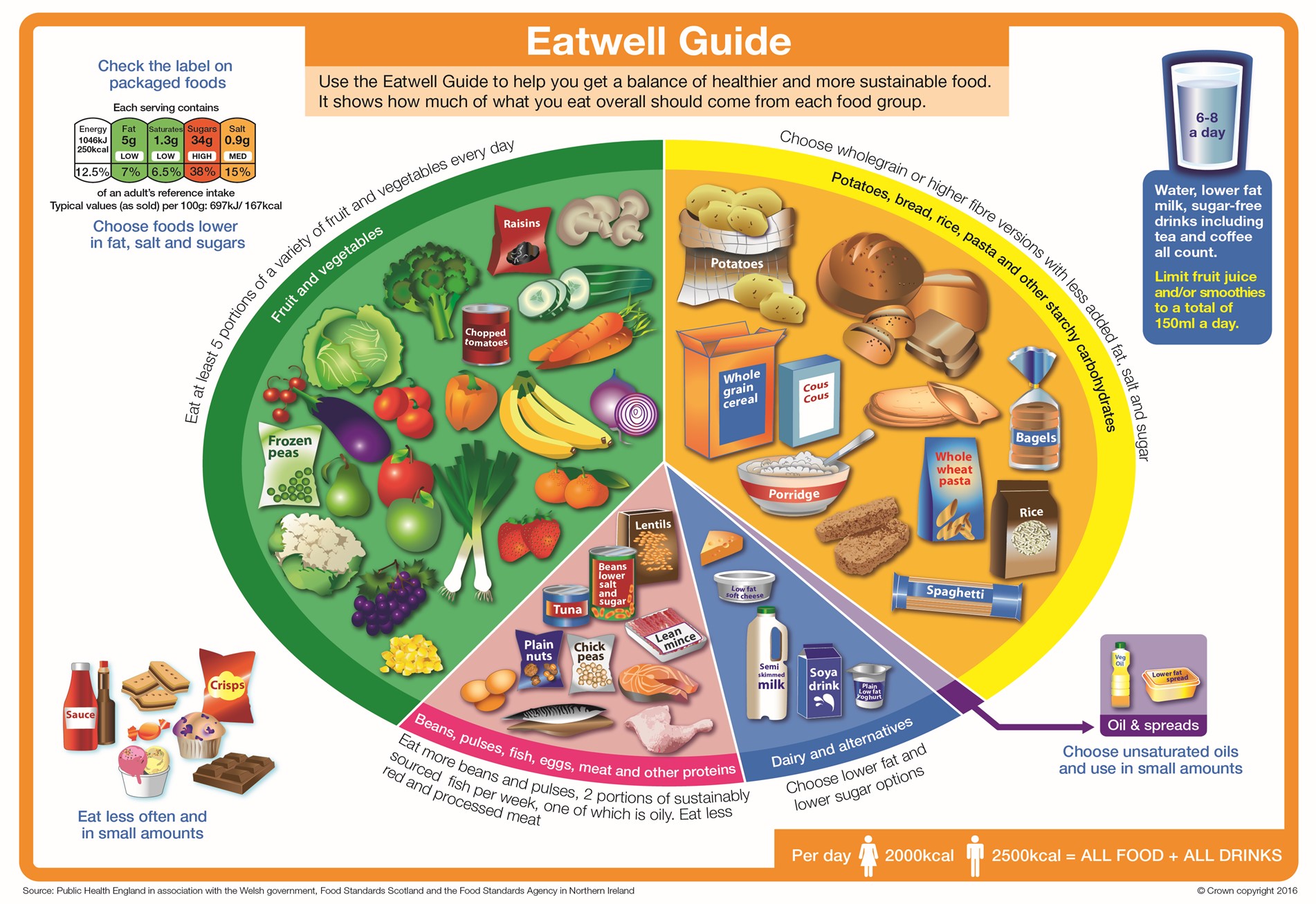The Eatwell Guide
Use the Eatwell Guide to help you get a balance of healthier and more sustainable food. It shows how much of what you eat overall should come from each food group.
Beans, pulses, fish, eggs, meat and other proteins (2-3 portions per day) are good sources of protein, vitamins and minerals. Protein is essential for growth and repair of the body.
Dairy and alternatives such as milk, cheese, yoghurts, fromage frais (2-3 portions per day) are good sources of protein, vitamins and calcium which are needed for healthy bones and teeth.
Fruit and vegetables (a mixture of both, aiming for 5-9 portions per day) have vitamins, minerals, fibre and antioxidants which can reduce the risk of heart disease, stroke and certain cancers.
Potatoes, bread, rice, pasta and other starchy carbohydrates (5-9 portions per day) give you energy as well as fibre, calcium, iron and B vitamins. Choose wholegrain or higher fibre versions whenever possible.
Oil and Spreads – Choose unsaturated oils and spreads and use in small amounts. Swapping to unsaturated fats will help reduce cholesterol in the blood.
Food and drinks containing added sugar should be limited as we don’t actually need them. We can get all we need from the other food groups but we can have them as an occasional treat.
These recommended portions are a guide and should be kept to the lower end if aiming to lose weight and/or you are inactive or do light activity.
What is a Portion
2 cupped hands is a portion of raw leafy vegetables or salad.
The size and thickness of your palm, excluding the fingers, is the same as 50g of cooked meat.
A small matchbox is equal to a portion of cheese or 30g.
200mls of milk or a standard 150g yoghurt pot would be a portion of your dairy intake.
Know Your Carbs
All carbohydrate foods break down into glucose, not just sugary foods therefore starchy, natural and added sugars will all affect your blood glucose levels.
Foods we haven’t mentioned which would not affect your glucose levels are:
- Fats – spreads, oils, cream, butter
- Proteins – red/white meat, fish, eggs
- Miscellaneous – salads and cheese
Added sugar is only one source of carbohydrate, it is equally important to consider starchy carbohydrates and the natural sugars. It is the total amount of carbohydrate which will determine how much your glucose levels will rise. When looking at food labels, it is the total amount of carbohydrate, on the back of the pack which you need to look at rather than the sugars. Choose wholegrain or high fibre carbohydrates where possible.
No special diet is needed for someone with type 2 diabetes. Avoid foods labelled ‘Suitable for diabetics’ as they are usually more expensive, can affect blood glucose levels and can have a laxative effect.
For more specific cultural information in different languages, including easy read and Braille, visit Diabetes UK.



